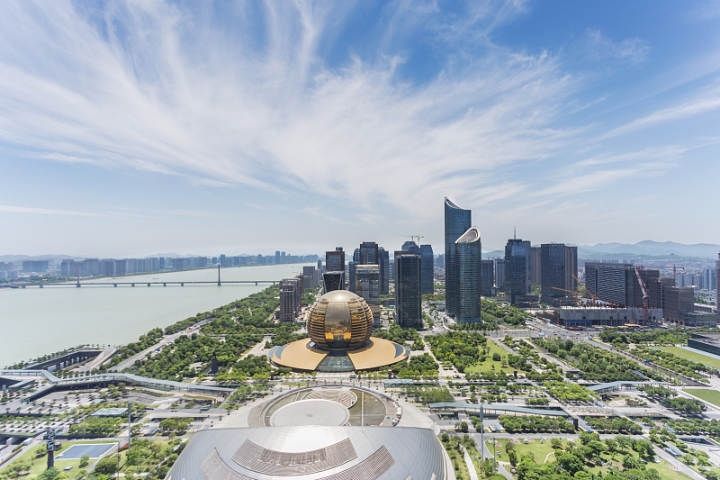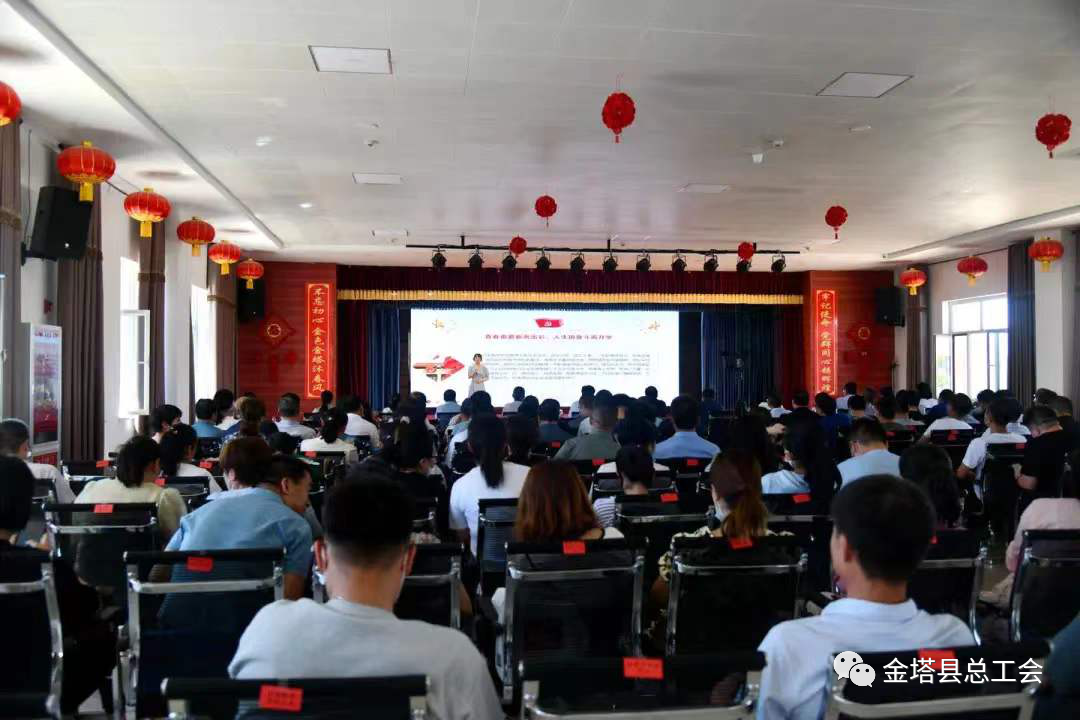Ten years of increased more than 10 million people in Zhejiang's population increase in the country's second attraction in the country
Author:Zhejiang Daily Time:2022.08.05
Zhejiang News Client reporter Zheng Yali

The changes in population and structure can reflect the development and changes of a regional economic and society. A few days ago, the Zhejiang Provincial Bureau of Statistics released the analysis report of the seventh national census (hereinafter referred to as "Seven Pu") in Zhejiang Province. Data show that the number of resident population in Zhejiang ranks 8th in the country, and the number of flowing population ranks second in the country.
In the past ten years, what is the absorption and carrying capacity of Zhejiang's population? Where is the employment trend going? In the data one by one, the Zhejiang economic and social development sketch maps spanning for ten years have outlined formation.
Population increase ranks second in the country
The population of Zhejiang is a bit "stunning". Compared with the sixth national census (hereinafter referred to as "six Pu") in 2010, Zhejiang increased by 10.147 million in ten years, with an average annual increase of 1.72%, with an average growth rate of 1.19 percentage points higher than the national (0.53%).
This increase is only 21.7094 million lower than Guangdong, ranking second in the country; the total population has surpassed Anhui and Hubei, from 10th nationwide to 8th.
Talking about the changes in the population cannot go around the economy. The relevant person in charge of the Zhejiang Provincial Bureau of Statistics analyzed that Zhejiang GDP jumped from 2.74 trillion yuan in 2010 to 6.47 trillion yuan in 2020. The economic and social development continued to develop rapidly, the population movement was more active, and it continued Regional gathering.
It is true. From the perspective of population data, Hangzhou, Wenzhou, Ningbo, Jinhua and other places are ranked among the top four in the province. Compared with 2010, Hangzhou, Jinhua, Ningbo and Jiaxing are the fastest. 37.19%, 31.50%, 23.65%and 19.98%.
As one of the most vibrant coastal provinces in economic development, Zhejiang has a strong ability to absorb and gather the population, and has continued to increase its population density since 2000. In 2020, Zhejiang's population density reached 612 people/square kilometers, which was 465 people/square kilometers higher than the national average (147 people/square kilometers), which was 4.16 times the national average. After the city, Jiangsu Province, Guangdong Province and Shandong Province, they ranked 7th in the country.
In Hangzhou, Ningbo, Jiaxing, Huzhou, Shaoxing, Zhoushan and other six cities, the Hangzhou Bay City Group, which has a more population density. "Qi Pu" data shows that the total population of the Hangzhou Bay urban agglomeration accounts for 56.59%of the province, and the population density reaches 786 people/square kilometers, which is 174 people/square kilometers higher than the province's average level. Among them, Ningbo and Jiaxing's population density reached 958 people/square kilometers, 1275 people/square kilometers, respectively, and became a high -population agglomeration area.
"The population agglomerations in Zhejiang coastal areas and northern Zhejiang region are obvious." Mi Hong, director of the big data and policy simulation (workshop) research base of Zhejiang University, explained that superior natural geographical conditions and good economic development levels made these cities right. The surrounding area has a large radiation effect.
Two of the 5 permanent population are the flowing population
The changes in the flow population reflect the local development trends. In Zhejiang, the number of this group has increased year by year. In 2020, the permanent population in Zhejiang Province was 25.5575 million, an increase of 6.938 million from 2010, accounting for 39.58%of the permanent population, that is, two of each of the five resident populations were the flow population.
It is worth mentioning that, compared with 2010, the education level of the inflows outside the province has gradually increased, especially the high -education population of college colleges and above. From 453,000 in 2010 to 1.468 million 3.91%rose to 9.22%.
From the perspective of age structure, most of the population flows outside the province are mainly labor -old people. For example, in 2020, 16.1865 million among the provinces flowing into the population, and the labor age population 16 to 59 is 14.1135 million.
"The inflow of a large number of young people has effectively slowed down the aging of Zhejiang's population." Mi Hong said that the Zhejiang Land Director Triangle is also the most developed province of private economy. Provide important support.
Where does the population flow from outside the province come from? More than half of them are concentrated in Anhui and Guizhou. Data show that in 2020, the top three provinces flowing into the source of the population outside Zhejiang Province are Anhui, Guizhou and Henan, respectively, with the population of 3.1388 million, 2.8275 million, and 2.4659 million, respectively, accounting 19.39%, 17.47%and 15.23%.
So where do people who come to Zhejiang? Hangzhou, Ningbo, and Wenzhou have the most populated provinces. Thanks to the high economy and more employment opportunities, the three cities in 2020 absorbed 8.632 million foreigners, accounting for 53.33%of all provinces' population.
The population is advanced and out. In 2020, a total of 2.362 million outsiders in Zhejiang Province went out to the province. Among them, Wenzhou, Taizhou and Lishui have a total of 1.2673 million people. It can be described as a stand -alone.
"Zhejiang's outflow population is mostly 'investment -type outflows'." Mi Hong explained that Wenzhou has a business tradition. These people are actively going out and active at home and abroad, creating the pattern of Zhejiang businessmen and Wen Shang. The vitality of the private economy. Residential living conditions are improved
An interesting phenomenon is that as the population moves and flows becomes more and more frequent, coupled with the changes in the concept of marriage and the increase in fertility, the "single noble" and "Dink family" have increased rapidly, and the family intergenerational relations are simplified. "Households" dominate.
Compared with the information of "Qi Pu" and "Liu Pu", the proportion of the "generation households" in Zhejiang Province rose rapidly from 48.23%in 2010 to 58.86%in 2020.
At the same time as the "one generation" became the mainstream, the living conditions of Zhejiang residents were also improved. In 2020, the average housing area of Zhejiang family households was 111.27 square meters, and the per capita housing area was 46.16 square meters. The housing area was relatively spacious.
"Behind the improvement of the living environment is the expectation of the population of the population of Zhejiang's public service." Mi Hong said that now, people have switched from simply earning money to a full -scale family development. Therefore, Zhejiang also needs to be in education and social security. Public service makes them want to come and want to stay.
In recent years, with the optimization of Zhejiang's industrial structure, the employment environment has also changed. "From the perspective of changes in the employment population structure or the changes in the GDP structure, it is generally presenting the trend of primary production, two production stability, and three production." The relevant person in charge of the Zhejiang Provincial Bureau of Statistics analyzed. For example, the employment population of the tertiary industry increased from 12.694 million in 2010 to 19.57 million in 2020, accounting for the proportion of all employment population from 37.87%to 50.74%. 55.76%.
In employment, a large number of high -education employment population is concentrated in large cities such as Hangzhou. Taking Hangzhou as an example, it accounted for 18.76%of the employment population in the province, and has 34.22%of the undergraduate degree, 56.98%of master's degree in the province, and 65.42%of doctoral degree employment population.
"This is closely related to the industrial layout of Hangzhou." Mi Hong said that more high -tech enterprises and new economic format companies such as Hangzhou and other cities can provide more jobs for high -education talents. Therefore, the "Matthew effect" is obviously obviously Essence
The extended coordinate system, these population changes also show the reconstruction of the changes in Zhejiang's economic and social.
- END -
Guangdong: "I am healthy, I grow up" event into the countryside

From June 9th to 10th, the Guangdong Family Planning Association's I Healthy, I Gr...
Jinsha County Federation of Trade Unions focuses on new format services.

Since the beginning of this year, the Jinsha County Federation of Trade Unions has...